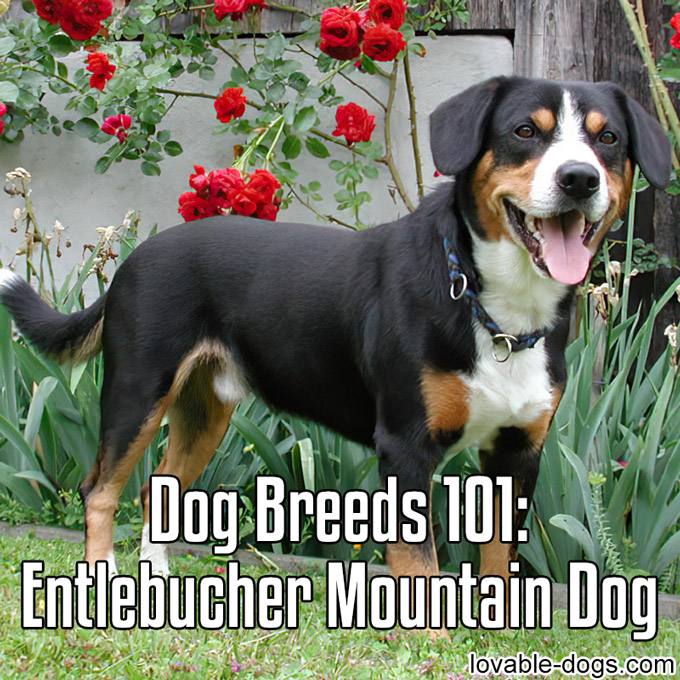
Photo – Wikipedia – lic. under CC 2.0
The Entlebucher is a relative of the Appenzeler, the Bernese Mountain Dog and the Greater Swiss Mountain Dog; out of the four, the Entlebucher is the smallest. These dogs are popular for their intelligence and their easygoing attitude. Even if they have an independent nature, they still form a strong bond with their humans. They love to have a job that they can constantly work on and they need to be given at least an hour of vigorous exercise in a day to burn off all their stored energy. [1]
The Entlebucher Mountain Dog, as well as all the Swiss herding breeds, descended from mastiff-type dogs brought to Switzerland by the Romans around 2,000 ago. The dogs that became the Entlebucher were used to herd cattle from the mountain pastures, although back then they were known as the Entlebucherhund. They were considered to be the same breed as the Appenzell Cattle Dog until a seperate breed standard was created in 1927. Over time, the breed developed slowly but was eventually recognized for its tireless and lively nature. [2]
These dogs have the typical features of a working breed. Square and sturdy outline; small, triangular ears; the eyes are lively and rather small; the head is well-proportioned to the body and the coat is dense and thick. Their feet are compact supporting a muscular body. They are always alert and eager to please their owners. Today, they are still used to guard livestock and kept as pets. Due to their nature, the Entlebucher needs a firm, consistent and calm owner who knows how to handle an independent dog. [3]
The breed suffers from a number of congenital defects due to the small foundation stock. Most common health problems are hip dysplasia and hemolytic anemia. The National Entlebucher Mountain Dog in collaboration with other organizations, is working to eliminate these health issues through responsible breeding, genetic testing and fact dissemination. [4]

